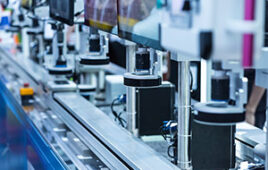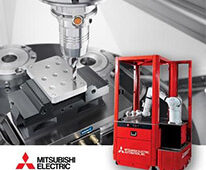When installing Coiled Spring Pins, the installation tool, often called a “quill,” should be large enough to cover the entire end of the Coiled Pin. The quill should be sized such that it pushes on all five coils simultaneously throughout the entire installation process. Otherwise, the pin will be difficult – if not impossible – to properly install into the assembly.
If the quill is too small, the inner coils will push through the center of the pin creating a “telescoping” effect and push out the back end of the Coiled Pin. Sometimes, users refer to this as the pin “unwrapping.” It is impossible for pins to “telescope” or “unwrap” if the proper insertion quill is used. A byproduct of pushing on the inner coils is elevated insertion forces, and if the quill is too small, the Coiled Pin will not be able to flex to take on the diameter of the hole since the quill will be lodged in the ID of the pin.
Occasionally, a company will develop an insertion quill that has a stepped end intended to fit into the ID of the Coiled Pin to “help align the pin with the hole.” There are two problems with this scenario. The first is that the actual center of the Coiled Pin is not in the center of the ID.
Therefore, the effect of sticking something into the ID of the pin is that it will actually knock the pin off-center from the hole! The second problem is that the nib at the end of the installation tool may prevent the pin from collapsing as it is inserted into the hole. This can significantly raise insertion forces; and if the nib is large enough, prevent full insertion of the pin into the hole. In some cases, the quill can break off and get stuck in the ID of the pin causing downtime on the assembly line.
Another common issue is when a company continues to use a worn insertion quill. Over time, the end of the insertion quill will break down. At some point, the end of the quill will be too small and not cover the entire end of the Coiled Pin. The quill will press on the inner coils of the pin, and insertion issues will arise.
The following exhibits what happened to a manufacturer of ejector clip assemblies when the installation tool their subcontractor used was not large enough to cover the entire end of the Coiled Pin. The result was that the insertion tool (quill) ended up pushing on the inner coils of the Coiled Pin, and made the pin “telescope” or “unwrap.” This dramatically increased the insertion force, and at times, prevented the pin from being fully installed into the assembly.
For anyone experiencing these installation issues, the solution is easy; simply change the installation tool. However, it is best to avoid this situation all together.
Generally speaking, if the Coiled Pin is going to be installed flush or above flush, it is recommended that the insertion quill have a minimum diameter equal to the nominal diameter of the pin. If the pin is going to be installed sub-flush, it is recommended that the insertion quill have a diameter greater than or equal to the diameter of the chamfer at the very end of the pin. Considering that insertion quills are wear items, assemblers should periodically check the very end of the quill to make sure that it is always flat and square and that it meets the above diameter criteria.
Spirol International Corporation
www.SPIROL.com
Filed Under: Factory automation





Tell Us What You Think!